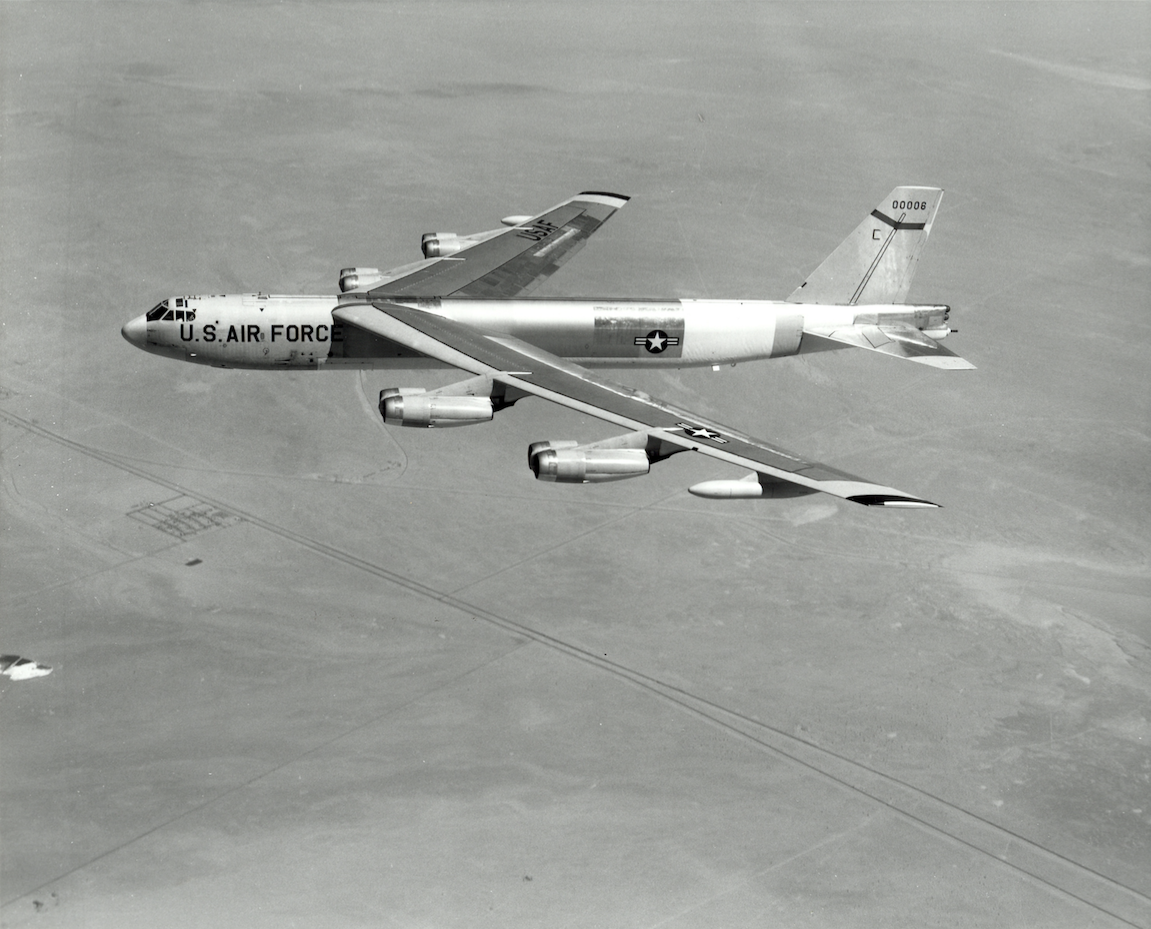
6 March 1961: The B-52H is the final version of the Boeing B-52 Stratofortress intercontinental strategic bomber. There are discrepancies as to the date of its first flight, with sources varying by as much as eight months. One very reliable source writes that the flight took place on 20 July 1960. A U.S. Air Force publication says that it was in March 1961, and another source (Boeing) says that it was 6 March 1961. An article in The Kansas City Times confirms the date:
B-52H IS TEST FLOWN
Initial Flight Is Made by Bomber at Wichita
Wichita, March 6.(AP)—The first of this nation’s newest missile bombers, the global B-52H, took to the air in its initial flight today.
A 6-man test crew of the Boeing Airplane company manned the production model super bomber, which is capable of flying 650 miles an hour over an 11,000-mile range.
The bomber will carry four Douglas Skybolt missiles.
—The Kansas City Times, Vol. 124, No. 56, 7 March 1961, Page 21, Columns 7–8
The U.S. Air Force contracted 62 B-52H Stratofortresses, serial numbers 60-0001 through 60-0062, on 6 May 1960. A second group of 40, serials 61-0001 through 61-0040, were ordered later. All were built at the Boeing Wichita plant.
A fourth source identifies the aircraft in the photograph above, Boeing B-52H-135-BW Stratofortress 60-0006, (Boeing serial number 464-371) as the first B-52H to fly. The existence of a nice aerial portrait suggests that this may be correct.
The B-52H, like the B-52G, is a re-engineered aircraft, structurally different from the XB-52, YB-52, and B-52A–B-52F Stratofortress variants. It is lighter, carries more internal fuel, giving it a longer unrefueled range, and is strengthened for low-altitude flight. The B-52H is also equipped with quieter, more efficient turbofan engines.

The B-52H was developed to carry four Douglas GAM-87 Skybolt air-launched ballistic missiles on pylons mounted under the wings, inboard of the engines. The Skybolt was armed with a 1-megaton W-59 thermonuclear warhead. The program was cancelled, however, and the North American Aviation AGM-28 Hound Dog air-launched cruise missile was used instead. (Interestingly, the Hound Dog’s Pratt & Whitney J52-P-3 turbojet engine could be used to supplement the B-52’s takeoff thrust, and then refueled from the bomber’s tanks before being air-launched.)
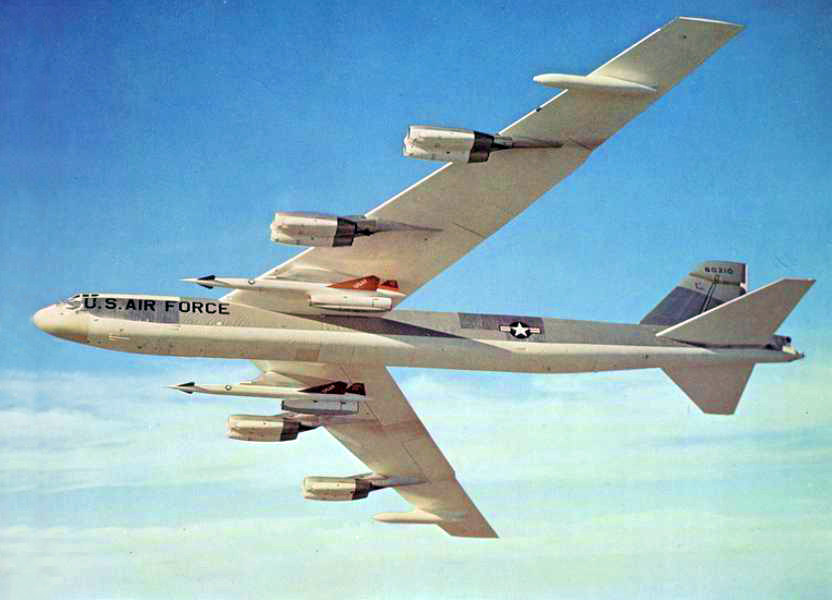
The B-52H is a sub-sonic, swept wing, long-range strategic bomber. It was originally operated by a crew of six: two pilots, a navigator and a radar navigator, an electronic warfare officer, and a gunner. (The gunner was eliminated after 1991). The airplane is 159 feet, 4 inches (48.565 meters) long, with a wing span of 185 feet (56.388 meters). It is 40 feet, 8 inches (12.395 meters) high to the top of the vertical fin. The B-52H uses the vertical fin developed for the B-52G, which is 22 feet, 11 inches (6.985 meters) tall. This is 7 feet, 8 inches (2.337 meters) shorter than the fin on the XB-52–B-52F aircraft. The bomber has an empty weight of 172,740 pounds (78,354 kilograms) and its Maximum Takeoff Weight (MTOW) is 488,000 pounds (221,353 kilograms).
The most significant difference between the B-52H and the earlier Stratofortresses is the replacement of the eight Pratt & Whitney J57-series turbojet engines with eight Pratt & Whitney Turbo Wasp JT3D-2 (TF33-P-3) turbofans, which are significantly more efficient. They are quieter and don’t emit the dark smoke trails of the turbojets. The TF-33 is a two-spool axial-flow turbofan engine with 2 fan stages, a 14-stage compressor section (7-stage intermediate pressure, 7-stage high-pressure) and and a 4-stage turbine (1-stage high-pressure, 3-stage low-pressure). Each engine produces a maximum of 17,000 pounds of thrust (75.620 kilonewtons). The TF33-P-3 is 11 feet, 10 inches (3.607 meters) long, 4 feet, 5.0 inches (1.346 meters) in diameter and weighs 3,900 pounds (1,769 kilograms).
The B-52H has a cruise speed of 525 miles per hour (845 kilometers per hour). It has a maximum speed of 632 miles per hour (1,017 kilometers per hour) at 23,800 feet (7,254 meters)—0.908 Mach. The service ceiling is 47,700 feet (14,539 meters). The unrefueled range is 8,000 miles (12,875 kilometers). With inflight refueling, its range is limited only by the endurance of its crew.
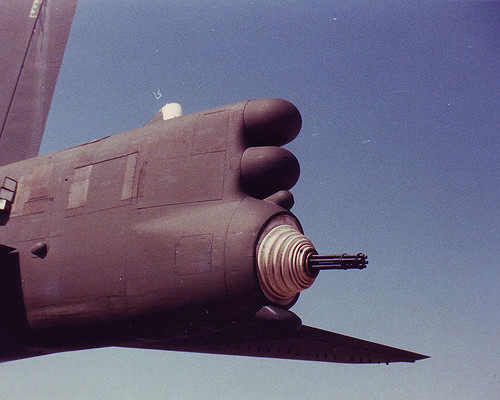
The B-52H was armed with a 20mm M61A1 Vulcan six-barreled rotary cannon in a remotely-operated tail turret. The gun had a rate of fire of 4,000 rounds per minute, and had a magazine capacity of 1,242 rounds. After 1991, the gun and its radar system were removed from the bomber fleet. The flight crew was reduced to five.
The B-52H can carry a wide variety of conventional free-fall or guided bombs, land-attack or anti-ship cruise missiles, and thermonuclear bombs or cruise missiles. These can be carried both in the internal bomb bay or on underwing pylons. The bomb load is approximately 70,000 pounds (31,751 kilograms).
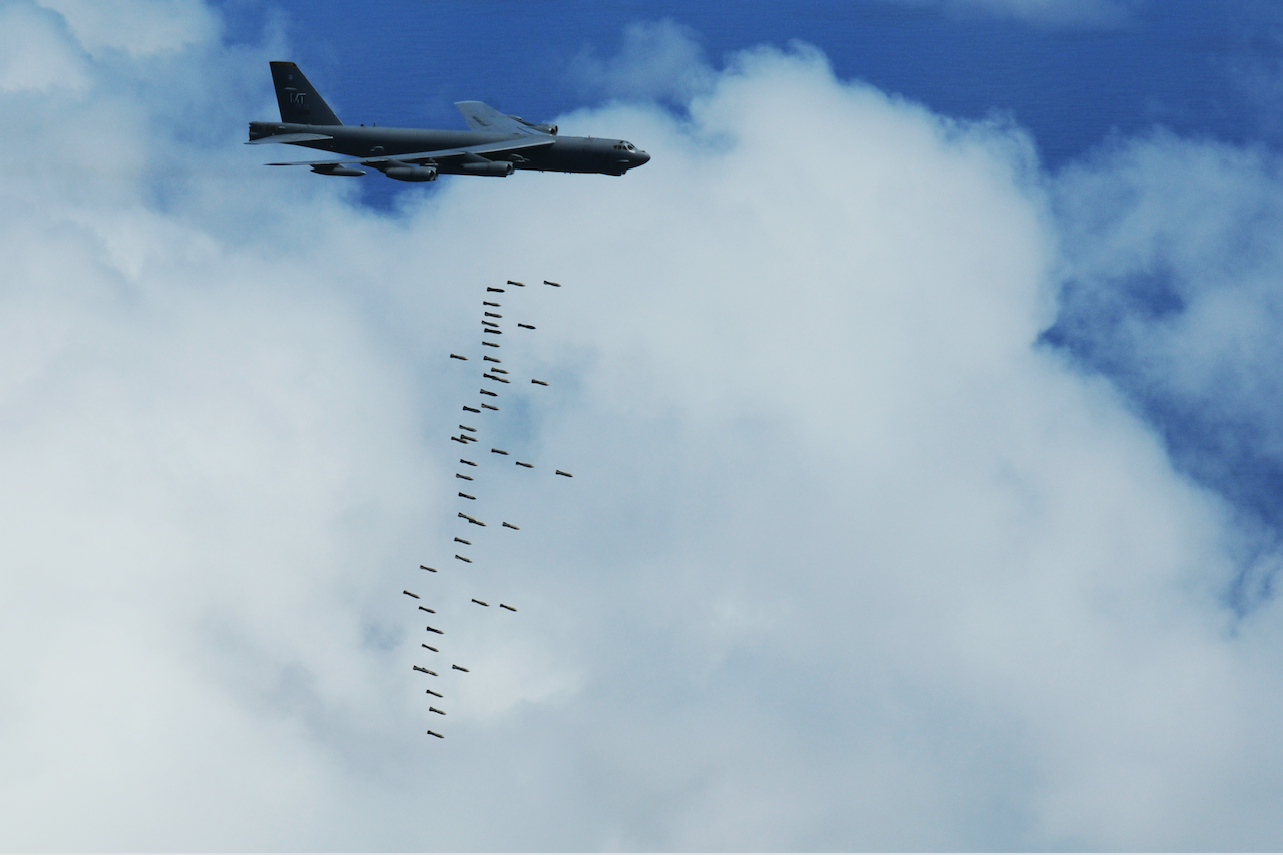
The first of 102 B-52H Stratofortresses entered service on 9 May 1961. The last one, 61-0040, was rolled out 26 October 1962. Beginning in 2009, eighteen B-52H bombers were placed in climate-controlled long term storage at Tinker Air Force Base, Oklahoma. As of December 2015, fifty-eight of the bombers remained in the active fleet of the United States Air Force and eighteen are assigned to the Air Force Reserve. In 2014, the entire fleet began a major avionics upgrade. B-52Hs remaining in the Air Force inventory will be upgraded with new engines, new radar, communications and navigation equipment, and will be redesignated B-52J. The B-52 is expected to remain in service until 2040.
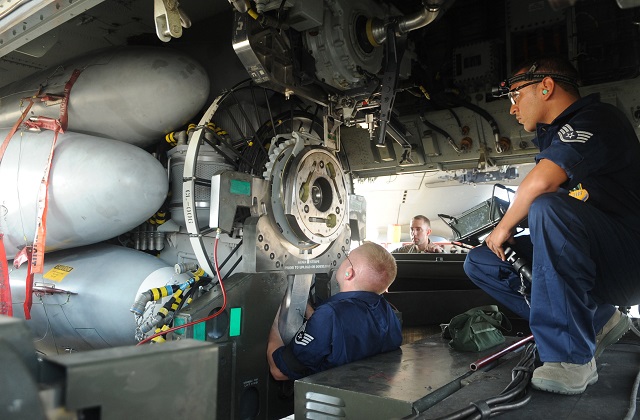
60-0006, the first B-52H to fly, crashed while making a ground-controlled (GCA) approach to Wright Patterson Air Force Base, Dayton, Ohio, at 2:07 a.m., 30 May 1974. The bomber’s rudder and elevators failed. Although 60-0006 was destroyed, all seven airmen on board, Captains Charles Brown, Robert E. Smith, William G. Heckathorn, Paul C. Hoffman, 1st Lieutenants John D. Weaver, James R. Villines, and 2nd Lieutenant Robert E. Pace, survived the accident without serious injuries.
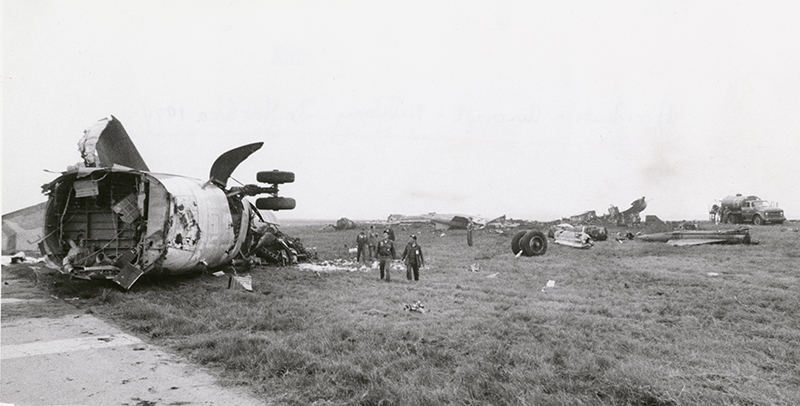
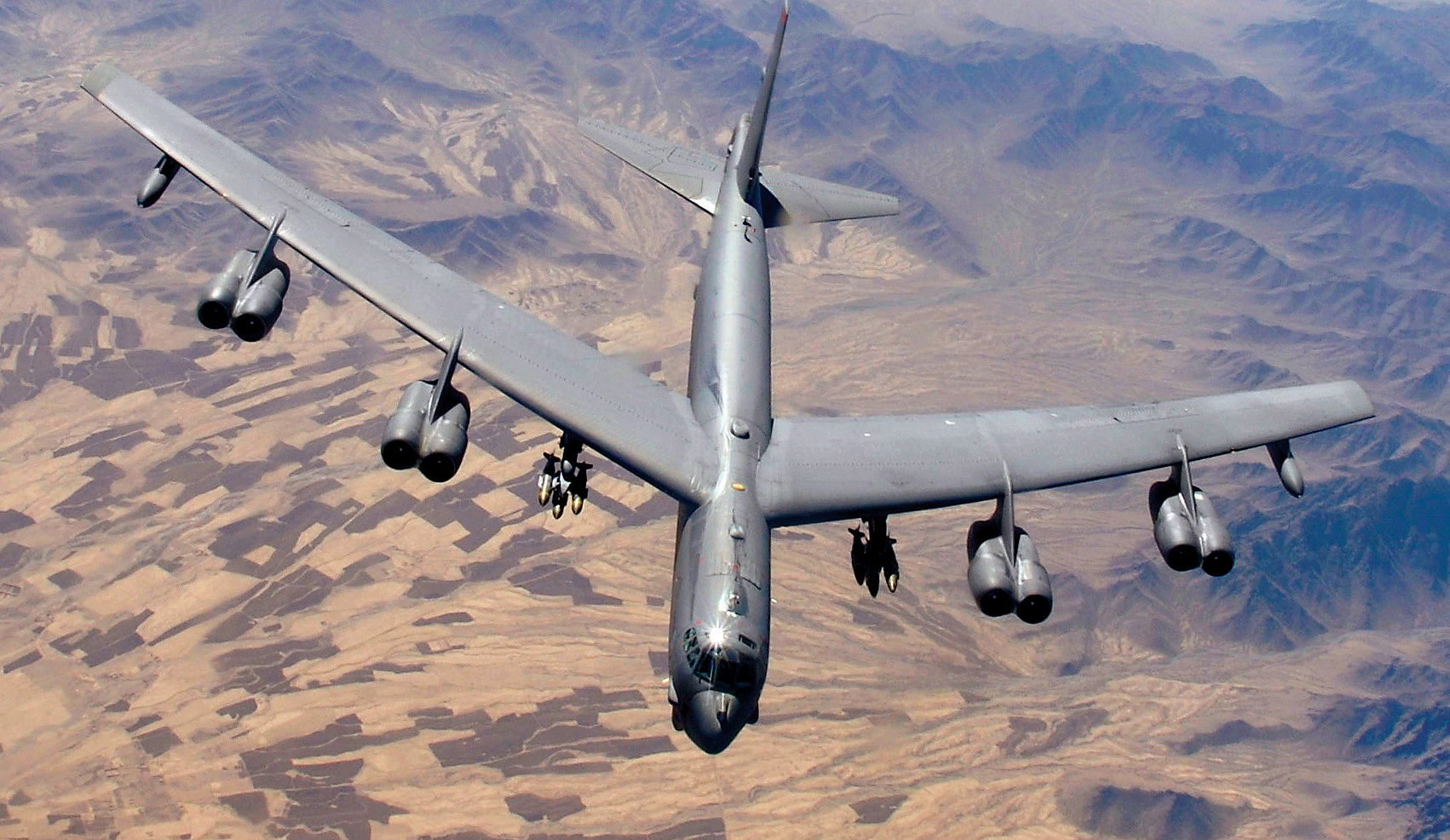
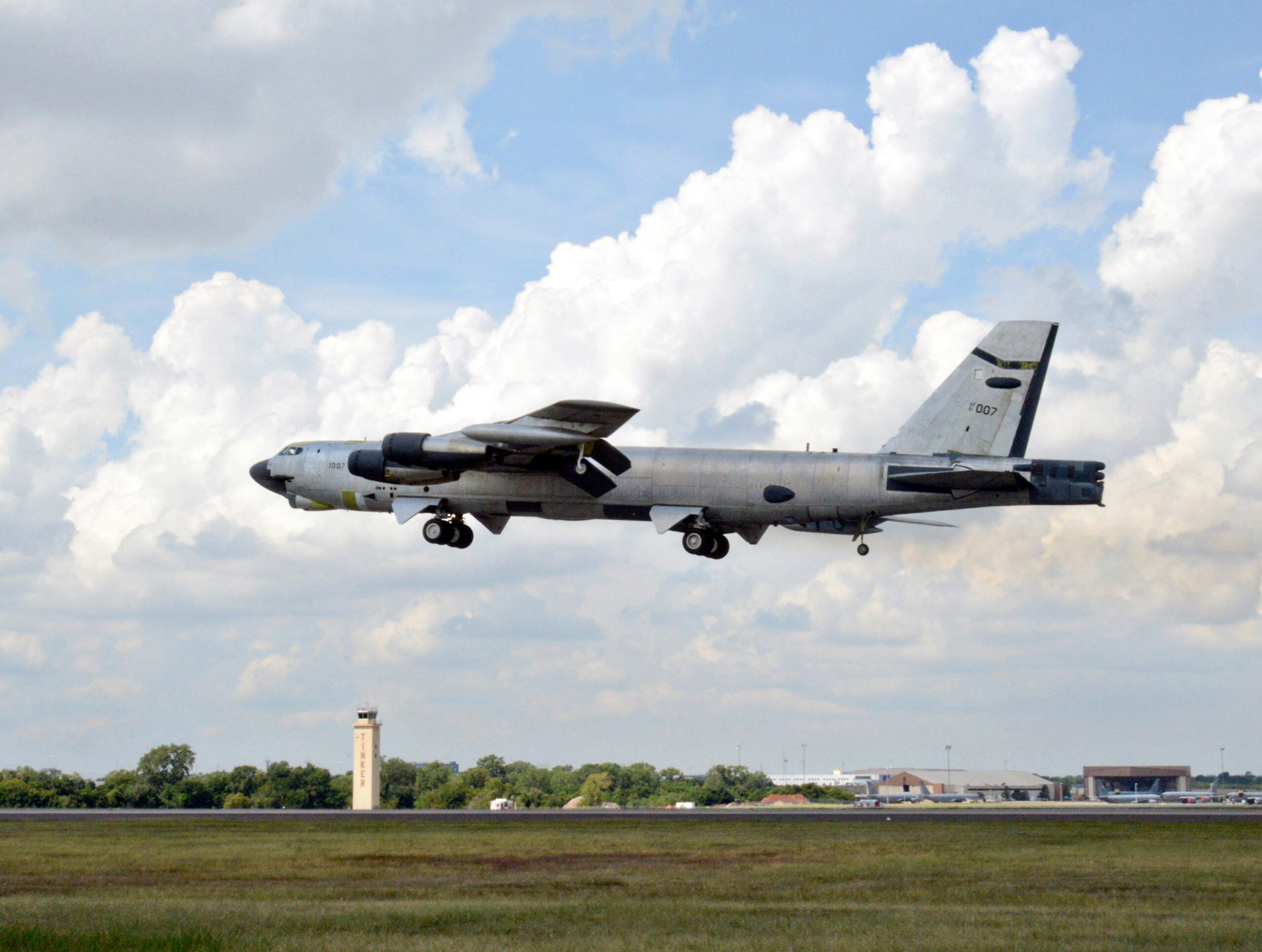
© 2024, Bryan R. Swopes
Thanks for the info, I worked on the AGM-28B @GFAFB ’62-’65
Thanks, this is the only reference I’ve read about the additional take off thrust from the Hound Dogs. My Dad had told me about how they experimented with addition thrust, and I always assumed some type of JATO at the wing tips, but I never could find anything in research. Here it is in your article that I’m fairly certain what my Dad was referring. He was pilot during Linebacker.
Worked on Fire Control for 5 years on the HS at KI Sawyer and an I G trip to Minot. Did several flights and enjoyed fighter intercepts, but not low level. Great Plane
You should have the article say the H model is the current or latest version of the B-52, not the final. It is very likely to be re-designated as the J model after upgraded with the new radar and new engines in the next 5-7 years.
Good point, Gavin. We shall see. . . .
Two observations: the first flight of the B-52H was indeed March 6, 1961. The “very reliable source” has it wrong. There’s no way that a B-52 contracted for on May 6, 1960, when the B-52H contract was signed, would have its first flight just ten weeks later, and contemporary publications reported the first flight, such as Aviation Week, so the March 1961 first flight is verifiable.
Secondly, your story has some misinformation about the vertical fin. The purpose of the shorter fin was only for weight savings. Again this was duly noted in Aviation week at the time, as testing revealed that shortening the fin to save weight would not adversely affect control. Also, the chord of the fin is not longer. The base of the fin is exactly the same on all B-52 models, and the angles of the leading and trailing edges of the fins on all B-52 models are exactly the same with respect to the fuselage. In terms of shape and dimensions, the B-52G/H fin is simply a shortened B-52A-F fin. Engineering drawings prove this. If you like, send me an email and I’ll provide all supporting documenting for these issues.
Thank you for that information, Greg. I will correct the post!
Hi Greg… I am wondering if the so-called first flight in 1960 was actually the B-52G that was used to test the TF33 powerplant…
Lisa, according to regular TDiA reader Kevin Rusnak: “I can officially clear up the confusion and confirm the dates:
“In 1960, B-52G s/n 57-6471 was modified as the ‘prototype B-52H’ (quoted from the program office documents) to serve as the test bed for the YTF-33 engines. Without more research, I can’t confirm the extent of the modifications made to it. It first flew on 10 July 1960 (not 20 July) and was later equipped with early production TF-33s. After the flight test program, it was returned to the standard G configuration and put back in service.
“The first *production* (aka ‘actual’) B-52H, s/n 60-006 made its first flight on 6 March 1961 at the Boeing Wichita plant and lasted approximately 2 hours. With no major discrepancies noted, the Air Force accepted the aircraft the same day and it was delivered to SAC on 9 May 1961.
“I hope that clears everything up.”
Bryan – while I didn’t run my comments through Public Affairs, I’m ok saying they’re made while wearing my “hat” as Chief Historian for the Air Force Life Cycle Management Center. My organization & its predecessors have been the home to that program office since its inception. That information was taken straight from original B-52 program office sources (1960 and 1961) in our archives.
Keep up the outstanding work – your site is a tremendous resource/reference for us, so I’m happy to contribute whatever little bits I can along the way.
Thank you very much, Kevin. I appreciate the detailed input.
I know you are aware that two MIGs (Fishbeds) were shot down by the tail gunners of B52D’s during Linebacker. The first was on Dec 18, 1972 and the next on Christmas Eve, 6 days later. These were with the quad .50’s.
With that success, I wonder why those guns were replaced. Probably better range on the 20mm?
Standardization, perhaps? The tail gun on the B-58A was also the M61. I assume that it was felt that the explosive 20 mm shell would do more damage than the .50s. It is interesting to me that the tail gun was eventually removed from the B-52H.
The most plausible reasons for removing the gunner I have read is 1) budget, and 2) advancing air-to-air missile technology. The B-52 gun fire control system was very old and expensive to maintain, probably more expensive to replace; and by 1990 most enemy fighters would likely use a missile against the BUFF rather close to within gun range and therefore also be in range of the tail gun.
Defense became entirely electronic and the crew shrank to five.
The J model crew will be smaller yet due to more automation, going to four; two pilots and two EWO/Navs.
Perhaps, Eric, though when two B-52s shot down Mikoyan-Gurevich MiG-21 interceptors with their four .50-caliber tail guns during the Vietnam War, those MiGs were armed with Vympel K-13 air-to-air missiles. . . During Operation Desert Storm, a friendly McDonnell Douglas F-4G Wild Weasel fired an AGM-88 High-Speed Anti-Radiation Missile (HARM) at a radar source which turned out to be the AN/ASG-15 targeting radar of a Boeing B-52G-115-BW Stratofortress, 58-0248. The missile exploded just behind the bomber, which caused extensive damage. Reportedly, after safely returning to Prince Abdullah Air Base in Saudi Arabia, the B-52 was repaired and named In HARM’s Way. A few months later, the Air Force announced that the tail guns would be removed from the B-52 fleet. General George Lee Butler, the last commanding officer of the Strategic Air Command, said, “My decision to eliminate the guns from the ‘BUFF’ was not an easy one. It stemmed from the collapse of the Soviet threat and the leading edge of very sharp cuts.”
Thank you for an excellent article on the B-52. I would like to add details on the
modification of the B-52 wings for low altitudes. My father was the Prime Contracting Agent for the B-52 at OCAMA (Oklahoma City Air Materiel Area) TAFB in the 1960s and 70s. He told me that ground hugging radar allowed the B-52 to fly as low as 50ft or even lower. This facilitated “stand off” delivery of atomic weapons; the 52 would perform an inside loop, releasing the weapons near the top of the loop, launching the weapons. At the top of the loop the 52 would do a 180 roll and then drop down “on the deck”, avoiding the blast of the bomb and heading away from the target, again at extremely low altitude. My father said he watched films of the test 52 doing this maneuver, and the wings would flex in a large U shape. The Hound Dog and subsequent missiles made the stand off delivery maneuver obsolete.
The B-47 routinely performed the loop maneuver (“LABS”—Low Altitude Bombing System) as did several Cold War -era fighter bombers. See video at: https://youtu.be/mqIJL8lx00o I have never hear of the B-52 performing that, however.
You never heard of B-52 doing that type of maneuver because they never did. The B-47 did that. And as I recall, the Terrain Avoidance radar system was never designed to go as low as 50 feet. No way, no how. Not that low. And that radar system only presented a radar generated “horizon” , it was not linked with the flight control system. It was not a terrain following system like the B-1B has.
The vertical stabilizer was reduced in size not only for reduction of weight. It was shortened because the aircraft’s role had changed, requiring it fly at low level. Tests had shown the larger vertical stabilizer would likely fail for low-level use.
One H model, tail number 1023 (an aircraft I flew on circa 1986), did lose its vertical stabilizer in flight, but landed safely.
But again, the stabilizer was shortened for several reasons, not just weight reduction.
Was a M I R V version of SkyBolt ever proposed?
Not that I am aware of, Warren.
Thanks for this article. I was an aircraft electrician on Bufs & tankers at Westover AFB in 1965-67. Also at U-Tapao AFB. 67/68 Fond memories. John Guilbert